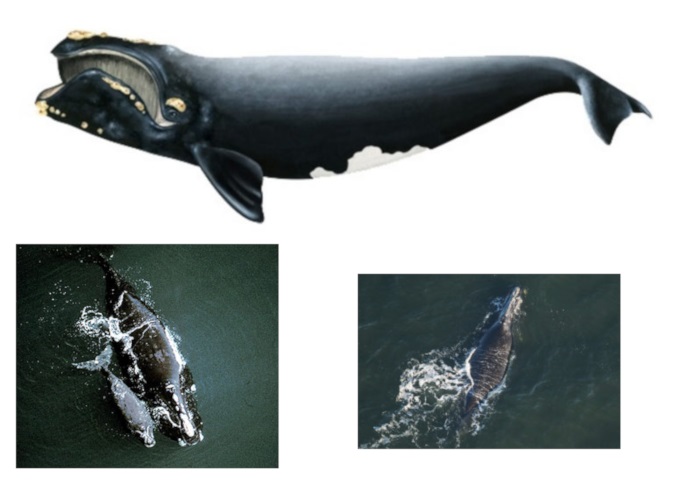
This past December, researchers received a belated Christmas gift when the first North Atlantic right whale calf of the season was spotted just off the northeast coast of Florida. Right whales are known to migrate from the cool waters of the North Atlantic down to the Georgia and Florida coast to give birth from December to March. Scientists track the migrating whales using aerial sightings and reported sightings by fishermen and others.
Since December, two additional mother and calf pairs have been spotted off the coast of northern Florida. This is a welcome sight after last year’s calving season when not a single new right whale calf was sighted.
For more information on the recent calf sightings, see this article from NPR.
Plight of the North Atlantic Right Whale
With an estimated population of less than 450 individuals, it is no surprise that North Atlantic right whales have become emblematic of endangered populations struggling to rebuild. If the current rate of population decline continues, the female population could be back to the 1990 level in just 12 years.
Each year, migrating North Atlantic right whales face interactions with fishing gear, vessel strikes, and changing environmental conditions resulting in changes in food availability and increased migration distances. These conditions can result in serious injury to a right whale and in many cases mortality.
This mortality, coupled with low birth rates, has resulted in the classic population decline scenario:
Whales – Deaths + 0 Calves = Trouble
The South Atlantic Council’s Efforts
The right whale population is monitored by NOAA Fisheries through its Protected Resources Division. Working with NOAA Fisheries, the South Atlantic Fishery Management Council has made great strides to lower the risk of North Atlantic right whales becoming entangled in fishing gear in the southeast. Through the Snapper Grouper Fishery Management Plan, the South Atlantic Council implemented black sea bass pot gear restrictions aimed at avoiding interactions with right whales when they are migrating south to give birth. And indeed, entanglements originating in the southeast are low compared to those originating in New England and Canadian waters.
Additionally, the Council has remained involved with the development of the Atlantic Large Whale Take Reduction Plan, a collaborative effort involving fishermen, scientists, conservationists, and state and federal representatives, which contains formal regulations (gear modifications, area closure, time closures etc.). The Plan also includes programs aimed at expanding research, monitoring, and outreach efforts in order to reduce the level of serious injury and mortality of North Atlantic right whales, humpback whales, and fin whales resulting from interactions with fisherie
Learn more about ongoing research to protect whales through the Atlantic Large Whale Take Reduction Plan by visiting their outreach website.
Concerns regarding cumulative impacts of noise, vessel strikes, and emerging fisheries in the southeast are addressed by NOAA Fisheries’ North Atlantic Right Whale Recovery Plan Southeast United States Implementation Team (SEIT).
For more information on NOAA’s efforts to protect right whales, see their right whale summary page.
The sighting of North Atlantic right whale calves this season gives reason to hope. Continued research and coordinated management efforts in the southeast, New England, and Canada will be critical in ensuring a future with a healthy population of right whales.
